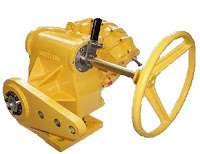 |
| Pulp and Paper Plant |
For example, the "kraft process" (also known as the sulfate process) is the method to convert wood chips into pulp and then to cellulose fibers. This is done by mixing the wood chips with sodium hydroxide and sodium sulphate, soaking, cooking and processing.
Here's a very basic explanation of the kraft process. Wood chips are soaked and processed in sodium hydroxide and sodium sulphate mixture known as "white liquor". After the wood chips are impregnated with white liquor, they are then cooked in digesters to break the wood down into cellulose. The solid pulp is then separated and the remaining fluid is referred to as "black liquor". Black liquor is further processed to remove solids and chemicals which are to be re-used in the pulping process. One of the final by-products is "green liquor" which contains sodium carbonate and sodium sulfide and is then reacted with lime to regenerate more white liquor.
All of these steps expose process equipment, piping, and valves to very tough environments. Kinetrol actuators are preferred in these situations because they don't allow corrosive atmospheres to penetrate the actuator or springs, their long cycle life, and their epoxy stove enamel finish.
Below is a picture of a Kinetrol model 14 double acting actuator on a 8” full-port ball valve on a green liquor line. The valve cycles 2 times per day to direct green liquor flow and weak wash (weak white liquor) alternatively from one pipe to another in order to prevent solids build up in the pipelines.
 |
| Kinetrol Model 14 in Green Liquor Line |

